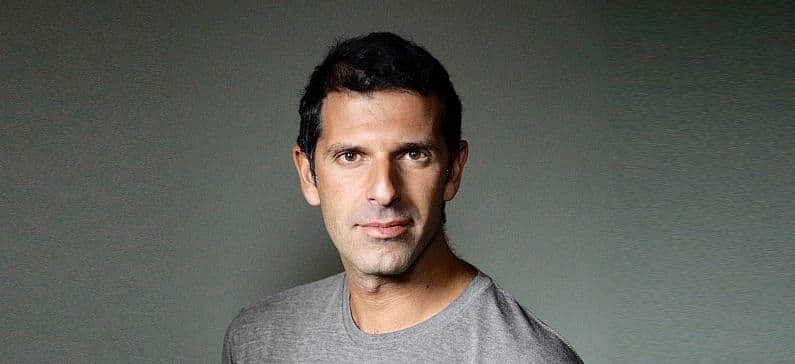
O επιστήμονας του Χόλιγουντ
The quantum physicist, Dr. Spyridon Michalakis, is studies wormholes, works on Hollywood blockbusters, designs nerdy fashion lines, and arranges celebrity chess matches. He is Director of Outreach for the Quantum Information and Materials Institute and conducts research at the Caltech Institute of Technology.
In addition to his serious scientific research, Michalakis also has a number of side projects that bridge the gap between science and pop culture. He collaborated with Project Runway designers on a fashion line to “redefine nerdy”. He was also the scientific adviser for the movie Ant-Man starring Paul Rudd – who he matched with world-renowned physicist Stephen Hawking for a game of “quantum chess”, a variation of the age-old game that throws quantum superpowers into the mix.
Spyridon Michalakis was born in Spata, in 1980, in a family of three boys who, after studying at Athens College, left Greece to study in the USA and MIT. Spyros’ studies were on Computer Science and Mathematics. The subsequent Ph.D. at the University of California at Davis (UC, Davis) was on computer quantum mechanics and mathematical physics. Commonly, on “how mathematics can explain the universe and the laws of nature beyond certain physics models”, he explains.
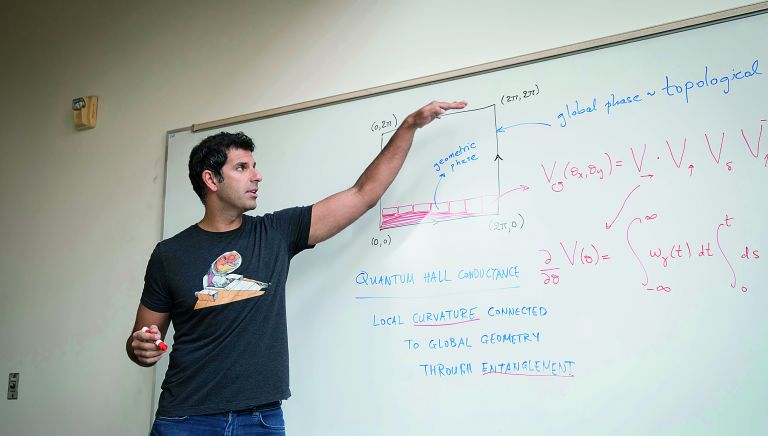
He grew up playing Street Fighter and Super Mario video games and was fascinated when he saw the movie “Jurassic Park” – that was when he wanted to become a “chaos mathematician like Jeff Goldblum”. This, combined with the fact that he and his two brothers, in addition to their participation in mathematical Olympiads, grew up being involved in sports and athletics, and they contributed significantly to the direction of his inclination.
“There, I learned that there is nothing in life that you can not do. There are no things you can not evolve because you are not trying to become better than someone else, but better than yourself. This is important. And the important thing isn’t you trying to get better. The important thing is to have some passion for something and say “I want to go deeper”. That is how nerds are, whether collecting stamps or reading comics, they want to deepen beyond superficial, easy and fast. ”
California, and in particular Los Angeles, where he is a researcher at the Institute for Quantum Information and Matter at Caltech, is Mecca of the cinema with thousands of people who one can meet at dinner and accidentally open its gates for you. Somehow, speaking about life and science at UC Davis, Michalakis happened to meet the well-known Ed Solomon, screenwriter of the film “Men in Black,” who thought he would have liked to get them to meet. His soon-to-be friend, Solomon, with whom he collaborated on the script of “Now You See me 2”, introduced him to Sharon Stone, Keanu Reeves and other Hollywood superstars.
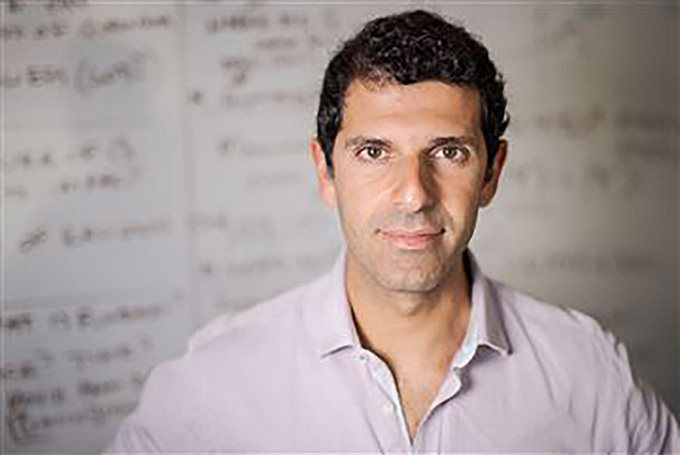
At the same time, Son Carroll, a professor at Caltech, introduced him to some very important people. He first knew how science counseling in Hollywood was done, since his wife was the first director of the Science & Entertainment Exchange, founded by the United States National Academy of Science (NAS) 2008 to bring together scientists and Hollywood.
The Greek scientist is well-known to the creators of the entertainment industry, with directors such as James Cameron or screenwriters like Paul Rudd, when they want help with the script’s verity, asking him for the right direction. This year, he returned with the film “The Ant-Man and the Wasp”, while he is a scientific adviser to the “Captain Marvel” (2019) by Anna Boden and Ryan Flake, where the Quantum Kingdom reappears in some way.
In Ant-Man, he talked about the Quantum Realm (the quantum kingdom). “It’s also a microcomputer like Microverse, but it has two very important differences. While Microverse exists at one millionth, Quantum occurs at one trillion of a meter. In this one has quantum-mechanical phenomena that appear for the first time.

In the past, Microverse had nothing to do with quantum mechanics – it was just a part of the world that was just smaller. In the Quantum Realm, you also gain superpower, as we see in Ant-Man. That was my idea. In short, it is even smaller and more complex and more beautiful and much more interesting,” explains the physical mathematician Michalakis.
When asked whether science could make it possible to create such a universe, he replies that “It could not, because the space between the particles is not so large as to make such a reduction possible. When you become so small, you lose your individuality. Because you start and lose your connection to the environment around you, which means that space and time that keep you in the moment disappears. When these disappear, the relationships between your own molecules disappear, so you are more of a probability cloud.”
In California, he found the ideal conditions to finish his Ph.D., in 2008, and one year later, to solve in cooperation with Microsoft researcher Matthew Hastings, “one of the most important problems of the millennium,” a puzzle related to the famous Quantum Hall Effect.
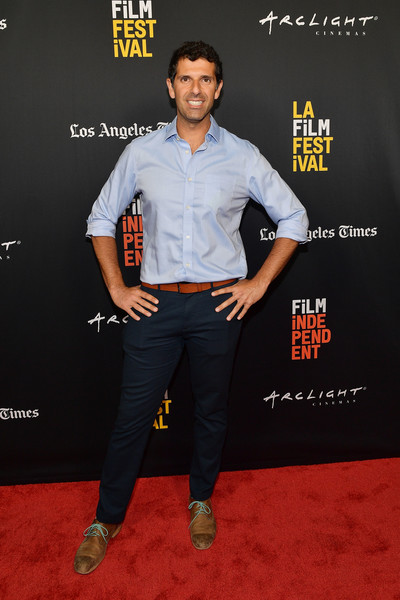
“Nearly no one knows that it is the most important physics problem in the last century, for which seven Nobel Prizes have been given to scientists who contributed to his understanding so far,” explains Spyridon Michalakis.
The question of whether he can be awarded for his contribution to this phenomenon, he says, “Let’s hope”, meaning that this will be proven in the years to come since Nobel prizes relate to work that has been done in the past. The solution to the problem will have dramatic consequences for the development of science, although in this case, it would not be reasonable to wait for the results in the near future.
“It’s like if 70 years ago, after creating the first computer, we asked ” What applications could it provide? “,” says Michalakis and continues. “The phenomenon is applicable to computers based on quantum mechanics (they are so-called quantum computers). Still, there are no such computers.
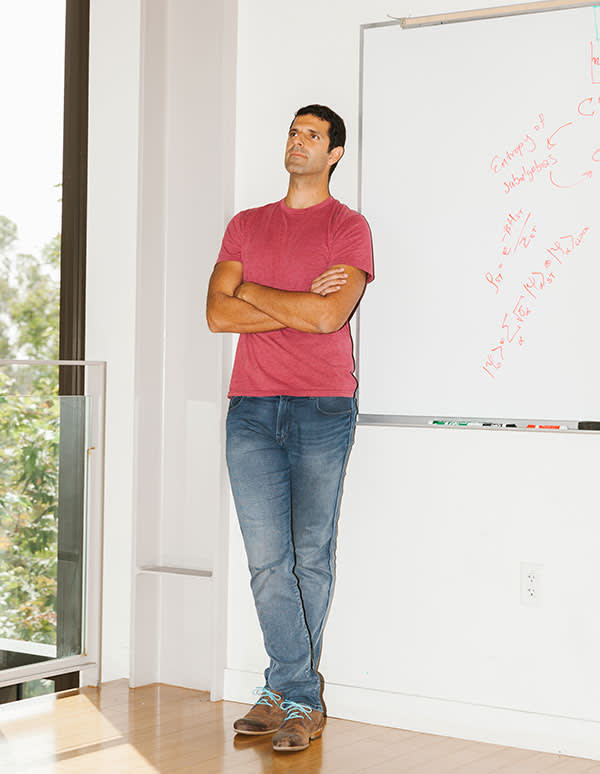
Microsoft and Google are working on creating them. When we get them, in five to ten years, we can solve problems that have been unresolved until now. Like, for example, how to create a drug to help treat cancer. Since, virtually, the molecules are quantum mechanics, quantum computers can assimilate the dynamic relationships of chemical processes. This means that we will be able to simulate how drugs spread with large molecules, something that is impossible so far, even from the world’s largest supercomputers.”
Until then, the Hollywood scientist may continue to work as a scientific adviser in the comic book universe using the magic of cinema to reconcile both kids and adults with science.
“I try to bring mathematical thinking to such a level that physics and mathematics become invisible, to not exist. Because the language in which they are expressed becomes a wall around some concepts that are very beautiful, but the world fears them and avoids them because they think that in order to understand them they have to do a lot of work, they have to learn this new language. I’m trying to simplify science for them. It’s hard, but it’s nice. ”
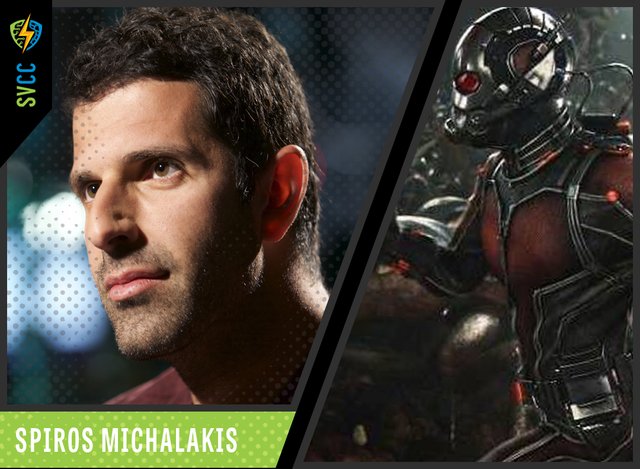
Sometimes science may not be perfectly correct in the film, but, as he says, it is not as important to Michalakis as to make it interesting. “As was the case with Star Trek, for example. Teleportation did not exist at the time, nor does it now, but when my professor suggested working with him on quantum teleportation, I said, “I’m postponing everything for that.”
TIPS...
– Tell us about your connection to Hollywood movies.
“Whether we like it or not, Hollywood makes a lot of superhero movies. I try to use them as a force for good by ensuring they get the science correct. I research quantum physics at Caltech in Pasadena. My work with filmmakers is done through an organization called The Science and Entertainment Exchange, which connects film and TV producers with scientists. So people bounce ideas off me, I read scripts and talk writers through various technical concepts.”
– How did this connection begin?
“A few years ago, I got a call from the producers of Ant-Man at Marvel Studios. I honestly didn’t know anything about Ant-Man so, on my flight to Atlanta, where they were filming, I had to do some research on who the character was and what technology he uses to miniaturize himself to the size of an ant. Paul Rudd, one of the writers and also the lead actor, was very keen to make it more realistic.”
– How is the communication between you and the movie creators?
“You want to help filmmakers preserve the ideas they have and also come up with something that is both more accurate and more impressive. So when they tell you what they want to do, you don’t say: “This is silly, you’re ruining the science.” Instead, you say: “Maybe you could do it this way instead.” Sometimes, when they’re talking to you as a quantum physicist about breaking the laws of physics, you often end up going far beyond what they thought was doable.
For instance, with Ant-Man, I told them that once things get really small and you’re down to the quantum realm, you don’t have space or time. So when you return to the “real world”, you need to come back to the point of reality you started from because you could just as easily reappear in the Stone Age.
The magic in science is often more powerful and goes deeper than the imagination of a seasoned writer who does cursory research on a subject such as quantum physics. That’s why working together with a good writer is like adding one and one and getting 5,000. It’s an amazing experience — and a great way to get the public excited about science.”
– Tell us a little about you.
“I grew up in Spata, a small town outside of Athens. I moved to Boston after high school to study mathematics with computer science at MIT.
I also work with the producers for the TV show Agents of S.H.I.E.L.D. They wanted to teleport people and I said: “OK, teleportation — we know how to do this in quantum physics.” It’s called quantum teleportation and these are the ingredients it needs.
But I showed them that you couldn’t just teleport somewhere randomly — you need an “anchor” in space-time. With Agents of S.H.I.E.L.D., I also helped them create an element of dramatic suspense, because, if a hero wants to grab other people and teleport them all to safety, then the probability of this failing gets higher as the number of people being teleported grows.
This is a result of the link becoming weaker and weaker, due to a phenomenon called “monogamy of entanglement”. This is the kind of idea that works well because writers and producers these days like constraints that create tension rather than the “Superman” effect, where everything is possible. Using real science means you have a lot of limitations which makes for better drama.”
– Is there something you see in the movies about science that you can’t stand?
“It’s a shame when I see films that inadvertently forgo scientific accuracy for added drama. For instance, one of the most dramatic, scary and beautiful moments in the movie Gravity is when Sandra Bullock’s character grabs hold of George Clooney’s character while they’re both floating out in space. He tells her she has to let go of him, otherwise, both of them are going to fly off and die because he’s pulling her farther and farther away from their space station. The trouble is, they’re so far away from Earth that, in reality, nothing would actually be pulling them.
I find myself watching that scene and thinking they could have achieved the same drama just as easily with something called “conservation of momentum”. With this, the only way for her to get back to the station would be for Clooney’s character to actively sacrifice himself by pushing Bullock away from him. It would have been real science and it would have made the movie better. You watch these things and you say to yourself: “Oh my goodness, I’m just a phone call away.”
Source: https://www.ft.com
















